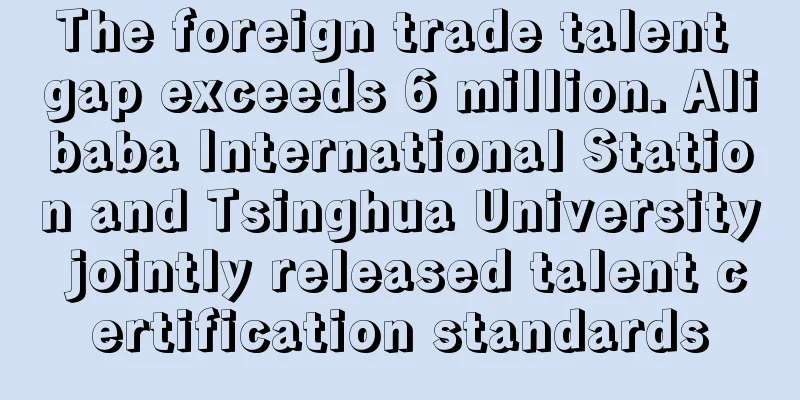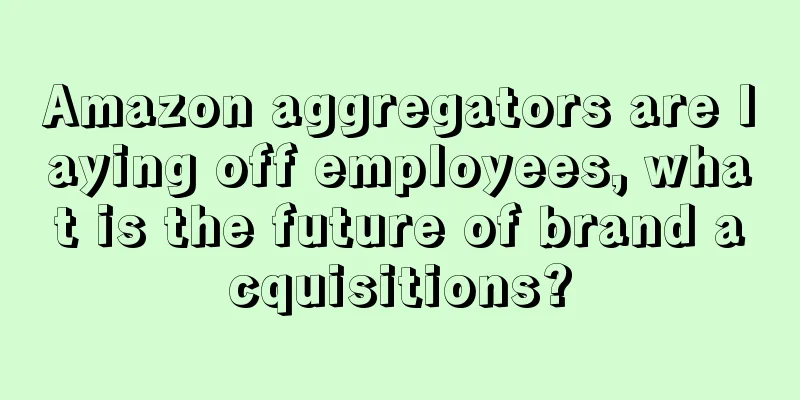A large number of sellers’ brands have been removed! Amazon expands the scope of “joint punishment”

|
Amazon's brand removal is still expanding. A large number of sellers' brands have been shut down, and the "collective responsibility" rule for brand abuse has made sellers question: "Can there only be one brand per store in the future ? " Brand authorization has also triggered related scanning, and a number of sellers' accounts have been blocked.
As brand abuse becomes more frequent, multiple service providers have entered the market to reap the benefits, taking advantage of the information gap to profit from sellers.
The scope of brand removal has been expanded, and one store can only correspond to one brand?
In early September, many Amazon sellers discovered that the problem of brand abuse suddenly broke out . Both new and old brands were not immune. Some sellers even had multiple accounts convicted of brand abuse, their brands were removed, and product reviews dropped sharply.
More than a dozen days later, the scope of brand abuse is further expanding, and more sellers have reported that their brands have been removed by Amazon after being judged to be abused.
The old brands of an Amazon seller in Europe and the United States were suddenly removed. The seller conducted self-examination and found the reasons as follows: 1. The attorney-in-fact was on the online blacklist; 2. He complained successfully about others using his pictures on the German site in July last year; 3. He successfully complained about copycat sales on the German site in September last year; 4. The entities were inconsistent. The US site was registered by an individual store legal person, while the trademark was registered by a company registered by the legal person.
After checking various reasons, the seller was still confused when he prepared to file a complaint. In the past two days, the number of similar brands being removed has increased suddenly. This problem is not an isolated case, and sellers are panicking.
What’s even more frightening is that brand abuse can also lead to collective punishment. According to the current situations encountered by sellers, there are two specific points: first, another brand in the same store will be implicated; second, the authorized brand will be judged as abused, resulting in brand-related account suspension.
A seller encountered brand abuse, which caused another brand in the same store to be shut down, and not only that, but also caused WEEE products to be taken off the shelves. Subsequently, more peers reported similar problems.
"——The abuse of a brand leads to the abuse of another brand; ——Mine too, other brands have also been judged to be abused; ——Several brands were removed.”
This wave of collective punishment made some sellers sigh: " It's too difficult! It looks like from now on only one store can correspond to one brand . " Other peers agreed with this view.
Brand authorization triggers Amazon-related number scanning
Another point of brand abuse is that it leads to the blocking of related accounts. A few days ago, Amazon launched a new round of account sweeps, which targeted brand authorization . If a brand-authorized store has a problem, other stores will also be implicated, resulting in a batch of seller accounts being blocked. One seller had more than 30 accounts blocked overnight , and one company's main account was blocked, and the six or seven authorized small accounts were also blocked.
The associations caused by brand authorization mainly include associations with familiar brands and associations with unfamiliar brands.
1. Associate with familiar brands
According to feedback from many sellers, most of the cases where store association occurs are when both the old and new accounts use the same brand, and the brand registration information is on the old account, which is authorized for use by the new account. Due to some illegal behavior, after the new account is blocked, the old account has not done any illegal operations, but because of brand authorization, Amazon's association scan is triggered.
It is worth noting that revoking authorization is useless because Amazon will check the history. Some sellers said that they authorized brands randomly on their accounts before, and later deleted all of them and changed to one brand per site, but it still didn’t work. Currently, the brand violation complaint functions under several cross-authorized accounts have all been revoked because of one brand.
It is understood that many Amazon sellers will do brand authorization and sell one brand through multiple accounts. Once an account has violated the rules, the brand will be affected.
"If a brand authorizes many stores, or a store has many brands, then if one brand has problems, all the brands in the store may be at risk." The analysis of a practitioner is chilling.
2. Associate with unfamiliar brands
Many sellers have previously asked service providers to merge zombie links, or they authorized the brand through the service provider’s account when registering the brand, or they have authorized the brand to the service provider ... These operations may be scanned, and many sellers have been blocked this time.
The appeal price is 6000, and the service provider enters the market to reap the benefits
This brand abuse will not only lead to collective punishment, but many sellers have also discovered a problem: after the brand is determined to be abused, the trademark registered with the trademark agent cannot be filed.
One person said that the trademark that the service provider registered on his behalf was lost, and he registered a new trademark, but the registration was rejected in seconds. After the appeal, he had to make a video call, but he didn't know if it would be done? He consulted a lawyer by email, and he said that he could change their agency, and he wanted to try to appeal back the previously lost trademark .
In this regard, some colleagues said that if the store’s brand is removed, Amazon will determine that the store has engaged in abuse and will not approve the registration, and appeals will be of no avail.
Experienced sellers said that if the new account and new brand registration is rejected, it can be registered through the IP accelerator in the background. If it is an old account that has had performance problems in the past, it is uncertain.
As brand abuse becomes more common, some service providers have seized on the needs of sellers and started taking on various complaint businesses.
One seller said that Amazon had revoked his brand because it was reported to have violated regulations. He appealed to no avail, so he wanted to find a service provider to help him appeal. A well-known service provider in the industry directly quoted a price of 6,000, while Taobao quoted 2,500, a large difference in the quotes.
Currently, many service providers of related businesses claim that they can successfully appeal and offer high quotes. Some of them have been very active recently, often posting related advertisements and helping to appeal to several brands on the same day. However, some sellers try to let the service providers operate, but it does not really solve the problem. We remind everyone not to be cheated by the service providers.
In some cases where trademark registration cannot be approved, one of the reasons is due to lawyer issues. Many lawyers are also connected by service providers.
If a lawyer does not have a professional qualification, or has too many trademarks under his name, Amazon will consider him risky and put him on a blacklist. Therefore, many sellers are caught without knowing it. The trademark registration of lawyers on the blacklist cannot be approved. Sellers can go to the website of the United States Trademark Office to check the name of the lawyer and the lawyer's qualifications. If there is a problem with the lawyer, they need to change a trademark lawyer .
At present, brand abuse is relatively troublesome to deal with, and it is very difficult to file a complaint. A large number of sellers are helpless. Some people bluntly said: " Brand abuse is basically equivalent to abandoning the store . "
Sellers who have experienced brand abuse and account scanning can't help but sigh: "It's too difficult to do business on Amazon this year. The platform's traffic has declined, causing low-price competition among peers. Some stable and profitable old products already have thin profits. The platform also conducts various verifications and account scanning from time to time. Amazon has gradually become a low-profit, high-risk platform." Amazon Seller Brand removal Joint responsibility |
Recommend
54% of consumers worldwide prefer virtual shopping to physical stores
Recently, Bazaarvoice research found that 61% of ...
What is Brand New Photo Service? Brand New Photo Service Review, Features
Brand New Photo Service is a service launched by ...
The number of pets exceeds 18 million! Japan's pet market is booming
The Foreign Agricultural Service (FAS) and the Gl...
Shopify releases report: Home and electronics become Indians' new favorites
Diwali is one of the most important annual festiv...
What is Douying Media? Douying Media Review, Features
DouYing Media is one of the earliest MCN agencies ...
What is Skywin Logistics? Skywin Logistics Review, Features
Skywin Logistics serves many Southeast Asian cross...
Amazon will permanently close several warehouses!
At present, cross-border e-commerce companies hav...
Another Amazon 3C seller account is down, the reason may be related to manipulation of reviews
According to the American technology website The ...
SHEIN invests over 10 billion yuan in domestic supply chain, and invests another 250 million yuan in two years to help suppliers upgrade digitally
While investing over 10 billion yuan in its domes...
Market size reaches 329.4 billion won! Korean breakfast cereals become the new favorite
Due to the impact of the new coronavirus, Koreans...
Beware of scams! eBay Germany suspends RatePay payment method
Title: Beware of scams! eBay Germany suspends Rat...
Alibaba International Station: Will set up the first shared live broadcast room at the Canton Fair
Today, Alibaba International Station announced th...
No distribution this time! Sun Caijin quits Zebao and starts a new brand
Few people in the cross-border circle are unaware...
What is Ganzhou International Dry Port? Ganzhou International Dry Port Review, Features
Ganzhou International Land Port is located in Nank...
What is Forever21? Forever21 Review, Features
Forever21 is a popular fashion brand that is popu...









